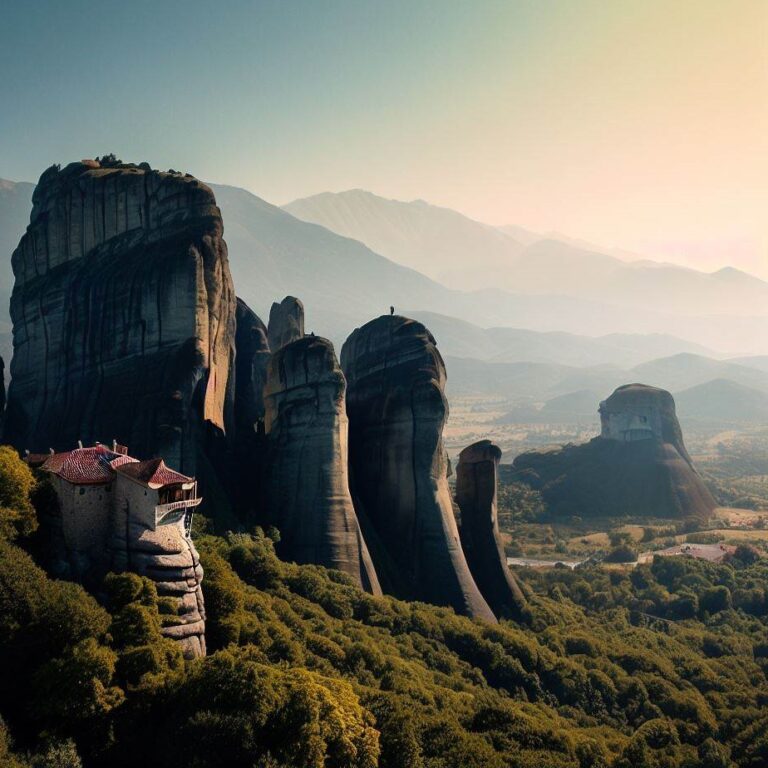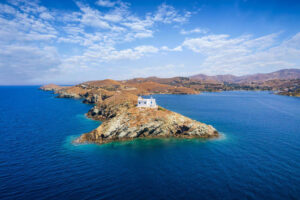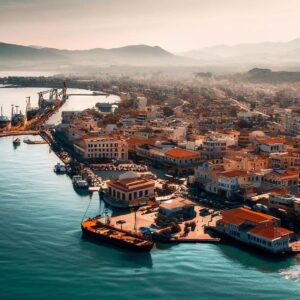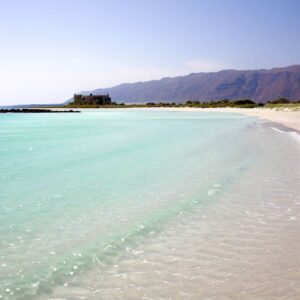Welcome to an extraordinary journey to one of Greece’s most stunning natural wonders – Meteora! This awe-inspiring geological formation has captivated visitors from around the world with its surreal beauty and spiritual significance. In this article, we will explore the breathtaking landscape, delve into the rich history of the region, and uncover the secrets that make Meteora a must-visit destination for travelers seeking a unique and profound experience.
The Origins of Meteora
Meteora, a Greek word meaning „suspended in the air,” is a collection of enormous sandstone rock pillars that rise dramatically from the Thessalian plain in central Greece. The geological formation of Meteora dates back millions of years when a vast inland sea covered the region. Over time, the sea receded, and the powerful forces of nature shaped these majestic rocks through erosion and seismic activity.
As the sea disappeared, the sandstone pillars were left behind, and nature’s artistic touch began sculpting them into the awe-inspiring shapes we see today. Wind, rain, and other elements worked tirelessly to create these massive monoliths, some reaching up to 400 meters in height.
The Monastic Communities of Meteora
Aside from its geological splendor, Meteora holds significant historical and religious importance. Starting in the 11th century, hermit monks sought solitude and spiritual seclusion atop these towering rocks, establishing the first monastic communities. These early monasteries were initially accessible only by climbing perilous cliffs using ropes and ladders, a testament to the devout dedication of the monks who sought isolation from the secular world.
Throughout the centuries, the monasteries of Meteora thrived, with more than twenty monastic complexes dotting the landscape at their peak. Today, only six of these monasteries remain in use, preserving their rich heritage, art, and religious treasures. The monastic communities attract both religious pilgrims and curious travelers seeking to glimpse into the past and experience the unique spiritual ambiance that pervades the region.
Exploring the Enchanting Landscape
Visiting Meteora is like stepping into a fairy tale. The surreal landscape, with its gravity-defying rocks and perched monasteries, evokes a sense of wonder and amazement. As you hike or drive through the area, you’ll be rewarded with breathtaking views at every turn, offering ample opportunities to capture stunning photographs and create lasting memories.
For those who love adventure, the hiking trails that wind through the rocks are a perfect way to immerse yourself in the natural splendor of Meteora. The trails vary in difficulty, catering to both casual strollers and experienced hikers. Exploring the area on foot allows you to discover hidden gems, such as natural caves, hidden springs, and diverse flora and fauna that inhabit the region.
If hiking isn’t your preference, several viewpoints accessible by road provide panoramic vistas of Meteora’s landscape. The most famous viewpoint, located near the Great Meteoron Monastery, offers an iconic and unparalleled view of the entire Meteora valley, making it a must-visit spot for anyone visiting the area.
The Spiritual Essence of Meteora
Meteora’s allure extends beyond its natural beauty. The monastic communities that have stood here for centuries add a spiritual dimension to the area. Each monastery has its unique history and architectural style, featuring stunning frescoes, intricate woodwork, and religious artifacts. The monasteries also serve as repositories of knowledge, housing ancient manuscripts and priceless religious texts.
Many visitors come to Meteora seeking tranquility and spiritual contemplation. The serene atmosphere and breathtaking surroundings create the perfect setting for personal reflection and meditation. Whether you are religious or not, the spiritual essence of Meteora has a profound impact on all who visit, leaving a lasting impression that stays with them long after they leave.
Preservation and Conservation Efforts
As a UNESCO World Heritage Site, Meteora is protected and preserved to ensure its cultural and natural significance endures for future generations. Conservation efforts focus on maintaining the fragile ecosystem and safeguarding the unique heritage of the monasteries and their artifacts.
Visitors are encouraged to respect the rules and guidelines set by the monastic communities, such as dressing modestly and refraining from loud noises to preserve the sanctity of the sites. Additionally, exploring the region responsibly and leaving no trace behind helps in safeguarding Meteora’s delicate environment.
1. How do I get to Meteora?
Meteora is accessible by various means of transportation. The nearest major city is Kalampaka, which is well-connected by trains and buses from major Greek cities. If you are traveling internationally, the closest airport is Thessaloniki Airport, from where you can take a train or bus to Kalampaka.
2. Is there an entrance fee to visit the monasteries?
Yes, there is an entrance fee to visit each monastery. The fees contribute to the maintenance and preservation of the religious sites. Please note that each monastery operates on different days and hours, so it’s best to plan your visit accordingly.
3. Are there accommodations available in Meteora?
Yes, there are several hotels and guesthouses in Kalampaka and Kastraki, offering a range of accommodations to suit different budgets. Staying in the nearby towns provides convenient access to Meteora and its attractions.
4. When is the best time to visit Meteora?
Meteora is enchanting year-round, but the best time to visit is during spring (April to June) and autumn (September to October). The weather is pleasant, and the landscapes come alive with vibrant colors during these seasons. However, visiting in the summer months can be hot, so be prepared with proper sun protection and water.
5. Can I take photographs in the monasteries?
Photography is generally permitted in the outdoor areas of the monasteries and their courtyards. However, photography may be restricted in certain interior sections, especially those containing religious artifacts or sensitive areas. Always ask for permission and respect any signage related to photography restrictions.
Zobacz także:






